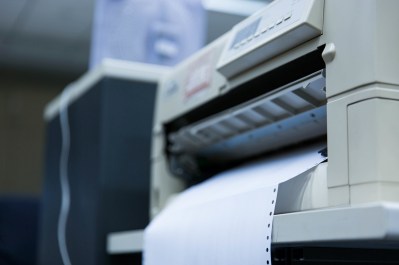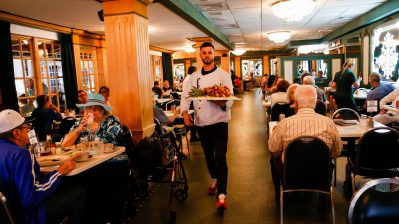TEXT OF STORY
TESS VIGELAND: If you shop at warehouse clubs like Costco, or Sam’s Club, I’m sure this will sound all too familiar. You go in expecting to spend, oh, a $100 on laundry detergent, toilet paper and all the other things you really need.
You end up spending at least twice that to take home a 10-pack of linguine and a five-gallon jug of Patron Silver. This, dear listener, prompts us to wonder…
Comedian: What the hell were you thinking?
Yes — what were you thinking? Our look at why we do what we do with our money.
We sent Rachel Dornhelm to her local big-box store to find out.
Rachel Dornhelm: It’s the middle of the afternoon, but the parking lot at my local Costco is packed. After finding a spot, I grab a shopping cart the size of a small car.
Sound of cart rolling
And head into the cavernous space. Past the person checking membership cards…
…And then through a canyon of tempting electronics.
Dornhelm to herself: So now I’ve walked in made it past the big screen TVs, and I’m kind of in the center of the store, where there are kite’s hanging and flags and oh, tables of clothes.
I stop and pull my list out, fully intending to focus on just that.
Dornhelm: The oats, the hummus, toilet paper, yogurt.
I am not going to fall into the trap of spending money save money on things I don’t need. But there are cues all around me screaming “Great deals! Huge Discounts!”
Larry Compeau studies consumer behavior at Clarkson University. He says that inner voice chimes in as soon as you lay your hands on that giant cart.
Larry Compeau: Immediately, as they walk in and they experience the scale, they start thinking value, saving money, lower prices.
And that membership card you have to flash as you enter, that whole gatekeeper aspect of the place, that also activates my bargain antennae, says Compeau.
Compeau: If you have to pay $50 a year just to shop there to get the member prices, then they must be good prices, they must be low prices.
Which is probably how oodles of kids’ clothes and stacks of books from the first tables I encountered immediately end up in my cart.
Here’s my problem, if I see books on a table, I just have to look.
But this isn’t all about the virtues of reading. I’m likely feeling something else too — a feeling of urgency.
Compeau: The inference that most consumers are going to make is that this must be something temporary. Either these are items that are on sale, these are items that are going to be discontinued. There’s something special about these otherwise they wouldn’t be on a table somewhere.
And then there only 316 shopping days until Christmas. Herb Sorensen, who studies consumer behavior, says shopping is a way more emotional than rational.
Herb Sorensen: Price doesn’t drive shopping as much as it’s thought to, however, perceived pricing does.
Who knew a forklift had anything to do with that?
Sound of honking
Forklift driver: Forklift coming through!
My ears hear it as “forklift coming through,” but my brain registers it as “warehouse, wholesale prices.” Retail designers say every sense is considered in a store’s design, so there are visual cues. Some are obvious, like the plain steel shelves holding cases of canned corn and gallon jugs of salsa. And then there’s the lighting.
Barbara Bestor: Warehouse store lighting is generally as little lighting as possible with as much wattage as possible.
That’s Barbara Bestor, chair of graduate studies at the Woodbury School of Architecture in Los Angeles. Bestor says the bargain warehouse design probably grew out of pure function, but it’s becoming its own aesthetic. Bestor points to the way warehouses display large quantities of the same thing over and over again, like cereal
Bestor: Like a regular supermarket even has one of each cereal box facing you and a whole stack of them behind, and here, you have like an entire wall of Honey Nut Cheerios.
Bestor says this over abundance encourages buying — by sending the message everybody else is stocking up, so I probably should too. Maybe that’s what I was thinking when I rolled up to the warehouse dairy case tiled with big pink tubs that were only $4.99.
I should be able to eat three pounds of cottage cheese in three weeks. Maybe?
But what if I stumbled across this same deal at my local supermarket? Who knows? But it’s definitely something to think about over my next bowl of cottage cheese.
I’m Rachel Dornhelm for Marketplace Money.
There’s a lot happening in the world. Through it all, Marketplace is here for you.
You rely on Marketplace to break down the world’s events and tell you how it affects you in a fact-based, approachable way. We rely on your financial support to keep making that possible.
Your donation today powers the independent journalism that you rely on. For just $5/month, you can help sustain Marketplace so we can keep reporting on the things that matter to you.


















